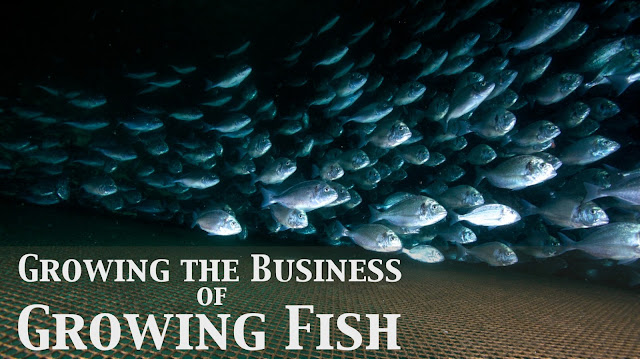 |
| Image: JeanneMenjoulet&Cie |
The rapid growth of intensive aquaculture production, in
some cases not well planned, has caused concern about environmental impact, human
health and social issues, says Globefish, the FAO's Fisheries and Aquaculture information analysis unit.
The bulk of global aquaculture production is in Asia. Yet opposition to aquaculture development is strongest in the Western world, where modern aquaculture is still a relatively new industry competing with well-established activities. In addition, the increasing dependence of developed countries on farmed seafood imports from developing countries and insecurity regarding product environmental, social and safety credentials have attracted considerable negative media attention. Moreover, scientific uncertainties and conflicting information on seafood consumption have further confused the public.
With a growing world population, annual supply needed from the aquaculture sector must further surpass that from capture fisheries, reaching 62 percent in 2030, to maintain current consumption levels per capita. This presents tremendous challenges to the sector, to policy-makers and to the aquaculture community at large. Improving perceptions of the sector will be instrumental if the goal is to be achieved.
The report 'Perceptions and misconceptions of aquaculture', produced by Globefish, consists of two parts: the first provides a global overview and synthesis of studies on perceptions of aquaculture in both developed and developing countries. Its aim is to better understand the main concerns of the public and diverse stakeholder groups.
This information can serve the industry as the basis for arriving at recommendations for reducing uncertainty about its products and farming practices, enabling more-effective communication strategies. The second part provides specific recommendations for addressing the public concerns identified in the first part, and discusses the roles various key stakeholders can play in this process.
Read the full article HERE.
The bulk of global aquaculture production is in Asia. Yet opposition to aquaculture development is strongest in the Western world, where modern aquaculture is still a relatively new industry competing with well-established activities. In addition, the increasing dependence of developed countries on farmed seafood imports from developing countries and insecurity regarding product environmental, social and safety credentials have attracted considerable negative media attention. Moreover, scientific uncertainties and conflicting information on seafood consumption have further confused the public.
With a growing world population, annual supply needed from the aquaculture sector must further surpass that from capture fisheries, reaching 62 percent in 2030, to maintain current consumption levels per capita. This presents tremendous challenges to the sector, to policy-makers and to the aquaculture community at large. Improving perceptions of the sector will be instrumental if the goal is to be achieved.
The report 'Perceptions and misconceptions of aquaculture', produced by Globefish, consists of two parts: the first provides a global overview and synthesis of studies on perceptions of aquaculture in both developed and developing countries. Its aim is to better understand the main concerns of the public and diverse stakeholder groups.
This information can serve the industry as the basis for arriving at recommendations for reducing uncertainty about its products and farming practices, enabling more-effective communication strategies. The second part provides specific recommendations for addressing the public concerns identified in the first part, and discusses the roles various key stakeholders can play in this process.
Read the full article HERE.
The Aquaculturists
This blog is maintained by The Aquaculturists staff and is supported by the
magazine International Aquafeed which is published by Perendale Publishers Ltd
For additional daily news from aquaculture around the world: aquaculture-news






















